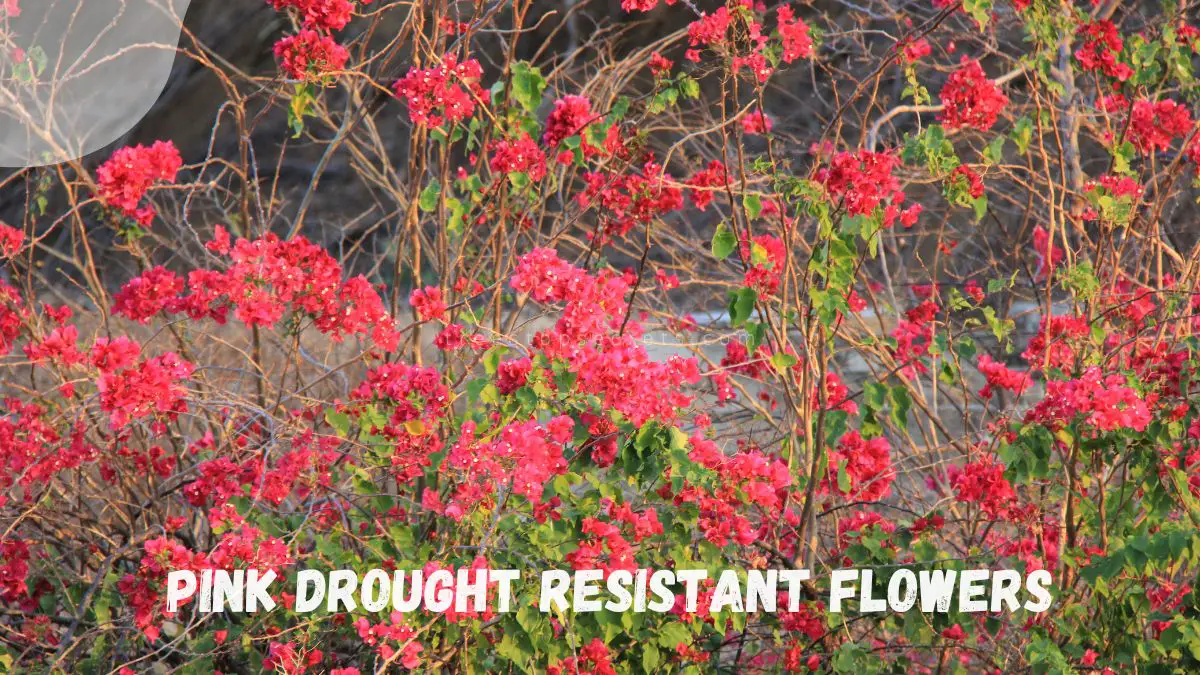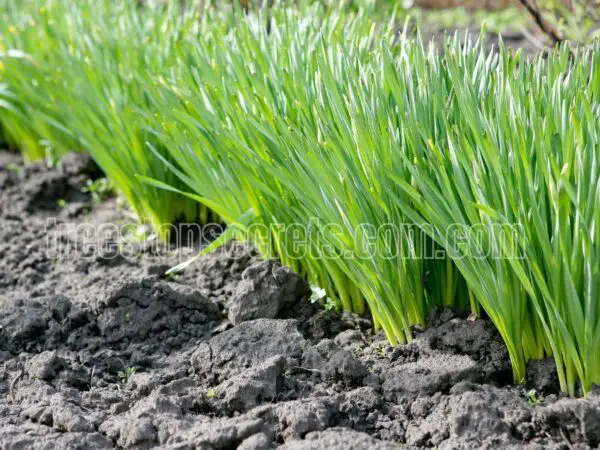Looking to add a splash of color with vibrant flowers to your garden while saving water? Discover a world of beauty with drought-resistant flowers. These hardy blooms thrive in challenging conditions, offering vibrant hues and low maintenance. Say goodbye to constant watering and hello to a stunning landscape that defies dry spells. Embrace the contrast of lush petals of vibrant flowers against arid climates with these resilient native perennial plants that include daisies and seeds.
Key Takeaways
- Choose Wisely: Select drought-resistant flowers based on your region's climate and water availability to ensure successful growth.
- Water Strategically: Implement efficient watering practices like deep, infrequent watering to promote root development in drought-tolerant plants.
- Optimize Soil Health: Improve soil quality with organic matter and mulch to enhance water retention and support the growth of drought-resistant flowers.
- Prune and Deadhead: Regularly prune and deadhead flowers to encourage new blooms and conserve plant energy during dry conditions.
- Experiment with Grouping: Plant drought-tolerant flowers in clusters or groupings to create microclimates that retain moisture and support each other's growth.
- Stay Informed: Keep abreast of local weather patterns and adjust your gardening techniques accordingly to maintain a thriving, drought-resistant garden.
Understanding Drought Resistance
Plant Types
Drought-resistant flowers come in various types, including echinacea, lilies, lavender, and roses. These plants thrive in low rainfall areas and dry soil conditions, perfect for diverse garden designs.
Moreover, unique plant types offer a range of options to suit different preferences and landscapes. For instance, echinacea, a native perennial, adds a pop of color to your garden while lilies bring elegance with their graceful blooms.
Characteristics
Drought-resistant flowers possess exceptional qualities that make them a favorite among gardeners. They are easy to grow and produce fragrant blooms that enhance the beauty of any garden.
Furthermore, these flowers attract beneficial insects like bees and butterflies, creating a thriving ecosystem in your outdoor space. Their vibrant colors and varied sizes add visual interest and diversity to your landscape.
Resistances
Drought-resistant flowers have evolved natural mechanisms to withstand low water conditions effectively. They excel in dry soil environments, where other plants struggle to survive.
These flowers exhibit remarkable resilience against drought stress, making them ideal choices for gardens in arid regions. Their ability to thrive with minimal water makes them sustainable and low-maintenance options for any gardener.
Choosing Drought-Resistant Flowers
Perennials vs Annuals
Perennials and annuals are two main types of drought-resistant flowers. Perennials are plants that live for more than two years, offering long-term sustainability to your garden. Annuals, on the other hand, complete their life cycle in one growing season, providing seasonal variety.
Advantages of Perennials:
- Longevity: Perennials can survive for multiple years, reducing the need for frequent replanting.
- Established Roots: Their deep roots help them withstand dry conditions better over time.
Benefits of Annuals:
- Seasonal Blooms: Annuals offer a burst of color and variety each season.
- Flexibility: Easily change your garden's look by planting different annuals each year.
Light Needs
Understanding the light requirements of drought-resistant flowers is crucial for their growth. Sunlight exposure plays a vital role in ensuring healthy plants. Different flowers have varying needs, so it's essential to provide adequate sunlight based on their specific requirements.
Providing Adequate Sunlight:
- Full Sun: Some flowers thrive in direct sunlight for most of the day.
- Partial Shade: Others prefer a balance of sun and shade to flourish optimally.
Bloom Colors
Drought-resistant flowers come in a wide range of vibrant colors, enhancing the visual appeal of your garden. Different bloom colors can create stunning displays, adding beauty and charm to your outdoor space. By strategically combining various colors, you can achieve an eye-catching and harmonious floral arrangement.
Creating Stunning Floral Displays:
- Contrast: Pairing complementary colors like yellow and purple can create a striking contrast.
- Harmony: Opt for analogous colors such as red, orange, and yellow for a cohesive look.
Plant Heights
When selecting drought-resistant flowers, consider their heights for landscaping purposes. Varying plant heights add depth and dimension to your garden, creating visual interest. By strategically placing tall, medium, and short plants, you can design a well-balanced and visually appealing garden landscape.
Strategic Placement Based on Heights:
- Background Plants: Tall flowers like sunflowers can serve as a backdrop.
- Border Plants: Low-growing varieties like daisies work well as border plants.
Cultivating a Drought-Tolerant Garden
Soil preparation
l preparation is crucial for planting drought-resistant flowers. It involves enhancing soil quality to support plant growth.
Understanding the specific soil requirements for these flowers ensures they thrive in challenging conditions. Incorporating organic matter and ensuring good drainage are key steps.
Improving soil quality through techniques like composting and adding organic amendments fosters healthier plants with better resilience to drought stress.
Water management
Effective water management is essential for the health of drought-resistant flowers. Balancing watering needs prevents issues like overwatering, which can harm the plants.
Learning to adjust watering schedules based on weather conditions and plant needs is crucial for maintaining optimal moisture levels.
Proper water management not only sustains plant health but also encourages root development, enabling plants to withstand dry spells.
Mulching techniques
Mulching plays a vital role in conserving moisture and suppressing weed growth in a drought-tolerant garden.
Benefits of mulching include protecting plant roots from extreme temperatures and reducing water loss through evaporation.
Different mulching materials such as wood chips, straw, or shredded leaves offer varying benefits in terms of moisture retention and soil temperature regulation.
Popular Drought-Resistant Flowers
Perennial favorites
Perennial drought-resistant flowers, such as echinacea and lavender, are beloved by gardeners for their resilience. Echinacea, also known as coneflowers, boasts abundant flowers that attract pollinators. These native wildflowers thrive in dry conditions, making them ideal for low-maintenance gardens. Lavender, with its fragrant blooms and silvery foliage, adds a touch of elegance to any landscape.
Echinacea stands out with its round flowers in various colors, from vibrant purples to soft pinks. This hardy plant requires minimal watering once established, perfect for busy gardeners. Lavender, on the other hand, not only tolerates drought but also repels pests with its aromatic oils. Its long-lasting blooms make it a great choice for cut flowers or dried arrangements.
Annual highlights
When it comes to annual drought-resistant flowers, look for varieties like marigolds and zinnias. These colorful blooms bring a burst of energy to your garden each year. Marigolds, with their sunny hues and compact growth habit, are versatile plants that thrive in hot, dry conditions. Their cheerful flowers attract beneficial insects while deterring pests.
Zinnias, known for their vibrant shades and long stems, are excellent choices for fresh bouquets. These showy annuals come in a wide range of colors, adding visual interest to any garden bed. By planting a mix of annual highlights alongside perennial favorites, you can create a dynamic garden that evolves throughout the seasons.
Care Tips for Drought-Tolerant Plants
Watering strategies
Drought-resistant flowers require infrequent watering to thrive in arid conditions. Adjust watering based on flower type. For succulents, water sparingly to prevent root rot. Consider seasonal changes when watering.
- Pros: Low water requirements reduce maintenance hassle.
- Cons: Overwatering can lead to root rot and plant death.
Fertilizing needs
Understanding the fertilizing requirements of drought-tolerant flowers is crucial for optimal growth. Different flower species may need varying types of fertilizers. Proper fertilization can boost blooming and overall plant health.
- Choose organic fertilizers for environmentally friendly options.
- Avoid excessive fertilization to prevent nutrient imbalances.
Pruning times
Knowing the best times to prune drought-resistant flowers is essential for maintaining healthy growth. Pruning promotes new growth and helps maintain the plant's shape.
- Regular pruning encourages lush foliage and vibrant blooms.
- Improper pruning can damage plants and hinder growth.
Maximizing Blooms in Drought Conditions
Blooming periods
Drought-resistant flowers bloom throughout the year, providing continuous color in your garden. Different plant types have varying flowering seasons, allowing you to plan a diverse and vibrant garden design. By staggering the blooming periods of various flowers, you can create an ever-changing landscape that maintains visual interest.
Sunlight exposure
Understanding the sunlight exposure requirements of drought-resistant flowers is crucial for their optimal performance. Positioning plants based on the availability of sunlight in your garden is essential to ensure healthy growth and vibrant blooms. Adequate sunlight exposure directly impacts the blooming of flowers and contributes to overall plant health.
Enhancing bloom vibrancy
To enhance the vibrancy of blooms in drought-resistant flowers, consider various techniques. Factors such as soil quality, water levels, and nutrient content can influence the intensity and longevity of bloom colors. Proper care and maintenance practices are vital for promoting healthy blooms and ensuring long-lasting beauty in your garden.
Practical Uses of Drought-Tolerant Flowers
Landscaping Ideas
When landscaping with drought-resistant flowers, create a sustainable garden that thrives in arid conditions. Incorporate various plant types to design visually appealing landscapes. Enhance curb appeal and promote biodiversity by choosing native drought-tolerant flowers.
- Create sustainable gardens
- Design visually appealing landscapes
- Enhance curb appeal and biodiversity
Erosion Control
Drought-resistant flowers play a crucial role in preventing soil erosion. Implement planting techniques that stabilize soil and reduce erosion risks. Plants help maintain soil structure, preventing runoff and preserving the integrity of your garden.
- Prevent soil erosion effectively
- Stabilize soil and reduce risks
- Maintain soil structure and prevent runoff
Wildlife Attraction
Drought-resistant flowers attract beneficial wildlife such as bees and butterflies to your garden. It's essential to create habitats for pollinators to support local ecosystems. Choose plant varieties that sustain wildlife populations, fostering a thriving environment for all species.
- Attract beneficial wildlife
- Create habitats for pollinators
- Sustain local wildlife populations
Overcoming Challenges in Dry Gardens
Dealing with pests
Dealing with pests is crucial for maintaining the health of drought-resistant flowers. Implement strategies like companion planting to deter pests naturally. Some flowers, like marigolds and lavender, act as natural repellents against common garden pests. Regularly inspect your plants for any signs of pest damage, such as holes in leaves or wilting.
- Implement companion planting
- Use flowers like marigolds and lavender as natural repellents
- Regularly inspect plants for signs of pest damage
Explore natural pest control methods to protect your drought-resistant flowers without resorting to harmful chemicals. Neem oil, a natural insecticide, can effectively combat pests while being safe for the environment. Introducing beneficial insects like ladybugs and lacewings can help keep pest populations in check.
- Utilize neem oil as a natural insecticide
- Introduce beneficial insects like ladybugs and lacewings
Understand the signs of pest infestation to address them promptly. Look out for yellowing leaves, distorted growth, or webs on plants as potential indicators of pest presence. By identifying and addressing pest issues early on, you can prevent significant damage to your drought-resistant flowers.
Disease prevention
Preventive measures are essential for safeguarding drought-resistant flowers from common diseases. Ensure proper spacing between plants to promote air circulation and reduce the risk of fungal diseases. Mulching around plants can also help maintain soil moisture levels and prevent disease spread.
- Maintain proper spacing between plants
- Mulch around plants to maintain soil moisture
Recognize early warning signs of plant diseases such as spots on leaves or unusual discoloration. Act promptly by removing infected plant parts and disposing of them properly to prevent disease spread. Consider using organic fungicides like copper sprays as a preventive measure against fungal diseases.
- Remove infected plant parts promptly
- Dispose of infected parts properly
- Use organic fungicides like copper sprays
Implement natural remedies and cultural practices to enhance disease resistance in your garden. Practices like crop rotation and proper watering techniques can help prevent disease outbreaks. Furthermore, encouraging biodiversity in your garden can create a balanced ecosystem that naturally suppresses disease development.
Success Stories and Inspirations
Garden designs
Designing a garden with drought-resistant flowers offers both beauty and sustainability. By incorporating these resilient plants, you can create stunning landscapes that thrive in challenging conditions. Consider xeriscaping, a design approach focused on minimizing water usage while maximizing visual impact. This style often features gravel paths, succulents, and of course, drought-tolerant blooms like lavender and yarrow. Another popular design choice is the Mediterranean garden theme, known for its vibrant colors and aromatic herbs. This style embraces the use of flowers like rosemary and sage, which not only survive drought but also attract beneficial insects.
When planning your garden layout, remember to mix different plant heights, colors, and textures for a dynamic look. For instance, combine tall drought-resistant flowers like Russian sage with low-growing options such as ice plant or gazania. This layering creates depth and interest in your garden beds. Incorporate hardscaping elements like rocks or decorative mulch to enhance the overall aesthetic. By carefully selecting plant varieties and arranging them thoughtfully, you can achieve a visually appealing and water-efficient garden.
Plant combinations
Pairing drought-resistant flowers with compatible plants is key to achieving a harmonious landscape. Consider combining flowering perennials like coneflowers with ornamental grasses for a striking contrast in color and texture. These combinations not only add visual interest but also support each other's growth by providing shade or attracting pollinators. Pay attention to bloom times when selecting plants to ensure continuous color throughout the seasons. For example, pair spring-blooming bulbs like tulips with summer-blooming salvias for a seamless transition of colors in your garden.
Strategic plant combinations can also help control weeds and reduce maintenance efforts. Planting ground covers like creeping thyme around drought-resistant flowers suppresses weed growth while adding a carpet of color to your garden. Integrate native plants into your landscape design to attract local wildlife and promote biodiversity. By experimenting with different plant pairings based on their characteristics and care requirements, you can create a balanced and visually appealing garden that thrives with minimal water input.
Closing Thoughts
In cultivating a drought-tolerant garden, you've learned the importance of selecting the right flowers, providing proper care, and maximizing blooms even in challenging conditions. By choosing drought-resistant plants wisely and implementing effective care strategies, you can create a vibrant and sustainable garden that thrives with minimal water.
Remember to stay resilient and adaptable as you face obstacles in your dry garden, drawing inspiration from success stories to overcome challenges. Your dedication to nurturing drought-tolerant flowers not only beautifies your surroundings but also contributes to environmental conservation by reducing water usage. Take the knowledge gained here and transform your garden into a flourishing oasis that withstands drought conditions with grace.
Start planting your drought-resistant garden today and witness the beauty and resilience of these plants firsthand! Share your experiences with others to inspire them to embrace sustainable gardening practices too. Your actions make a difference in preserving our environment for future generations.
Frequently Asked Questions
Are drought-resistant flowers suitable for all climates?
Yes, drought-resistant flowers are versatile and can thrive in various climates. However, it's essential to choose species that are specifically suited to your region's unique conditions for optimal success.
How can I identify drought-resistant flowers when selecting for my garden?
Look for characteristics like deep root systems, silver or fuzzy leaves, succulent stems, and native species to your area. These traits indicate the plant's ability to withstand periods of low water availability.
Do drought-resistant flowers require any special care or maintenance?
Drought-resistant flowers generally require less maintenance once established. However, regular watering during the initial growth phase is crucial to help them develop strong root systems for long-term resilience.
Can I mix drought-resistant flowers with other plant types in my garden?
Absolutely! Combining drought-resistant flowers with other plants can create a diverse and visually appealing garden. Just ensure that all plants sharing the same space have similar water needs for successful coexistence.
How can I maximize blooms from drought-tolerant flowers during dry spells?
To encourage abundant blooms during drought conditions, deadhead spent flowers regularly, provide occasional deep watering sessions rather than frequent shallow ones, and apply organic mulch to retain soil moisture and regulate temperature.
Image Source: Paid image from CANVA




